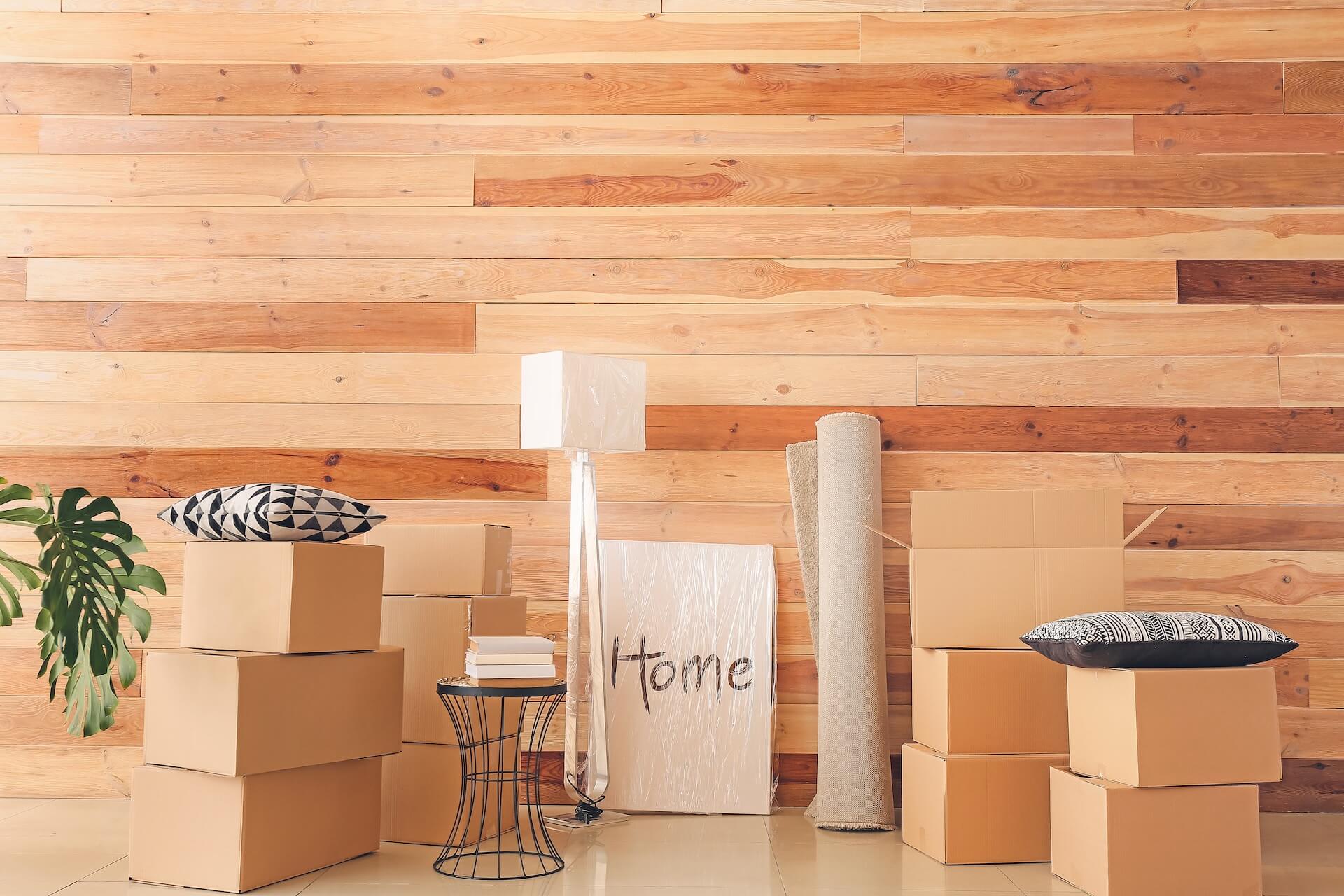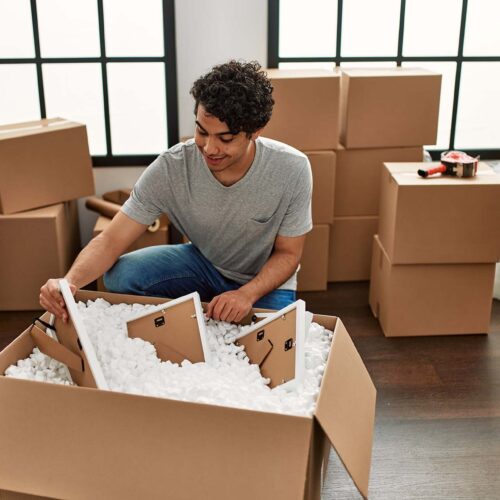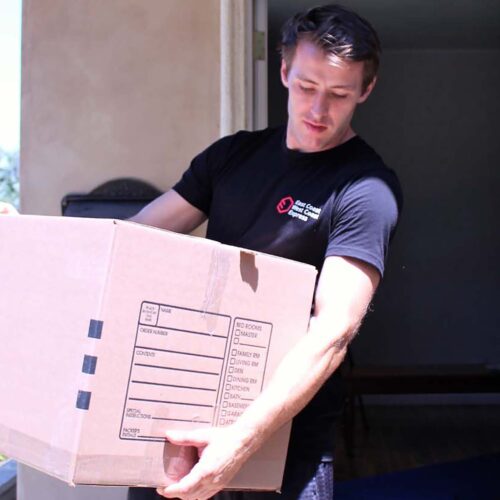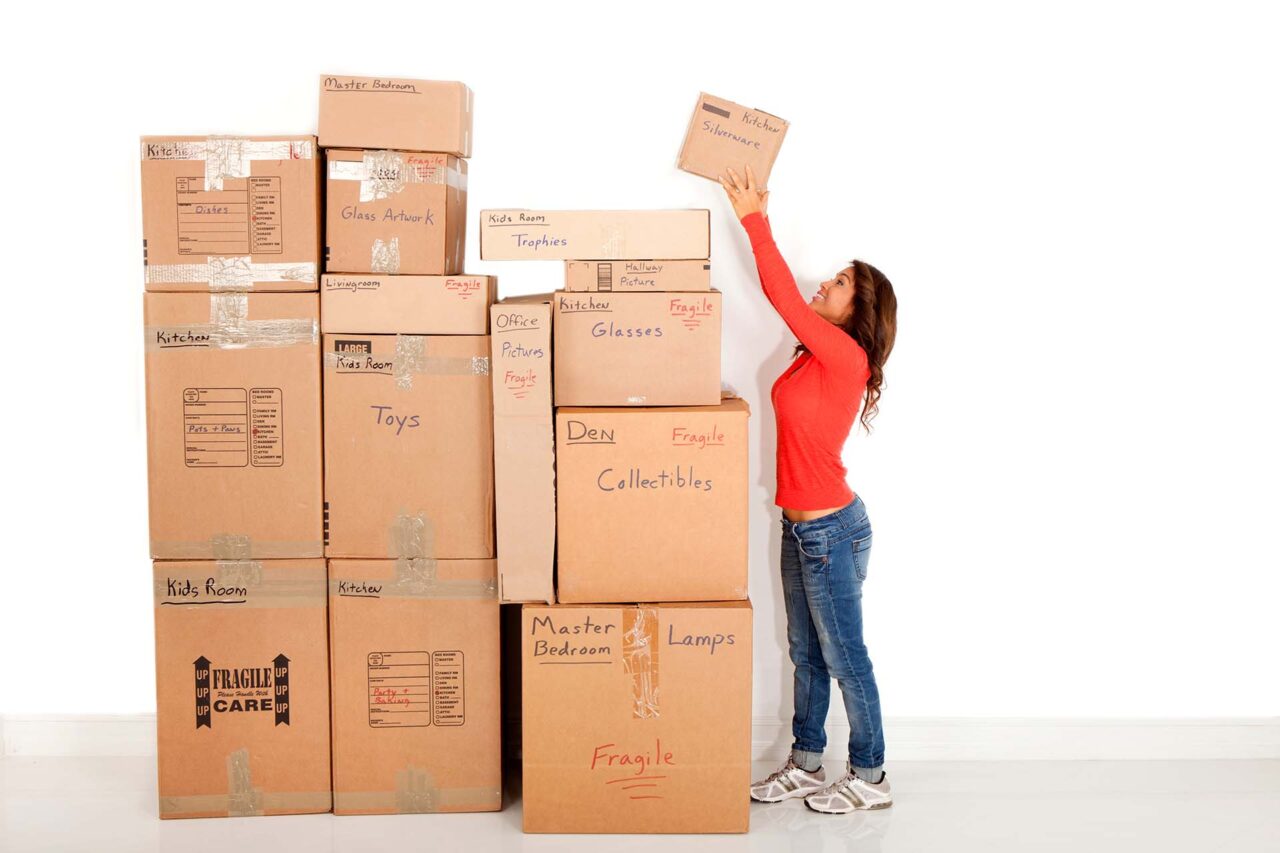

If you’re planning to move soon, you should learn about moving labels for boxes. They are an important – and often overlooked – part of any successful cross country relocation process, whether you’re doing it yourself or getting services from a long-distance moving company. Read on to learn how to properly mark your items when relocating cross-country.
Why Are Labels for Moving Boxes Important?
The biggest perk of labeling your things when packing is that it will make unpacking a whole lot easier. If you’re planning on getting long-distance moving services, your service providers will know how to handle each item without damaging anything, as well as how to load it on the truck and where to place it once they arrive at your new address. Likewise, if you’re moving to a smaller home and planning on using a storage unit for a while, labels will help you remember what is in the containers once you get them out of storage. All things considered, you should definitely include labeling in your moving to-do list.
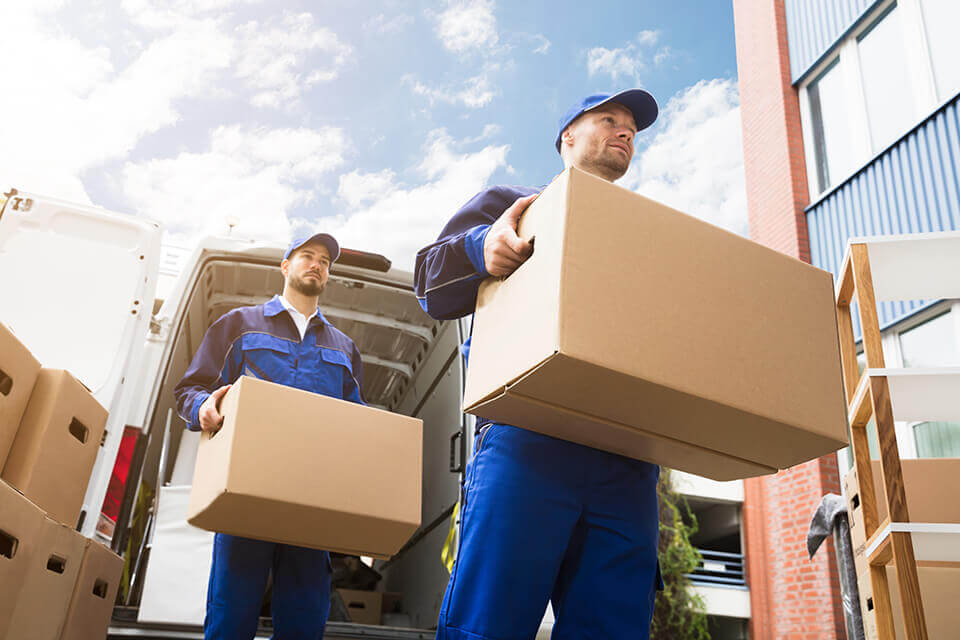 Labels will let the relocation professionals know how to handle each item
Labels will let the relocation professionals know how to handle each item
How Do You Label Boxes When Moving? Here are the Best Labeling Tips
Although it might not seem like it, marking your boxes is a relatively complicated task. Knowing exactly how to do it will ensure you get the best out of it. Here are some handy tips.
Where and How to Place Packing Labels for Moving on the Box
Correct placement of any tag or sticker is crucial. Here’s what you should do:
- Always mark at least three different sides of the carton. This way, no matter which way you place it, your relocation team will be able to see the writing on it.
- Use the “this way up” label. Simply draw some arrows pointing upwards to clarify which side is the top of the carton, so you or your cross-country movers don’t accidentally flip it over.
- The “fragile” warning is likely the most important thing to write. If the contents are even remotely breakable, make that clear on the sides of the carton. Also, learning the right method for packaging fragile items is crucial.
- Use smear-resistant, waterproof, thick markers. That is the only way to make sure your writing stays clear and visible throughout the shipping process and that it won’t smear or fade.
- If you got your boxes for free from someone who’s moved before or from your local grocery store, make sure to cross out any previous writings and take off any stickers to avoid confusion.
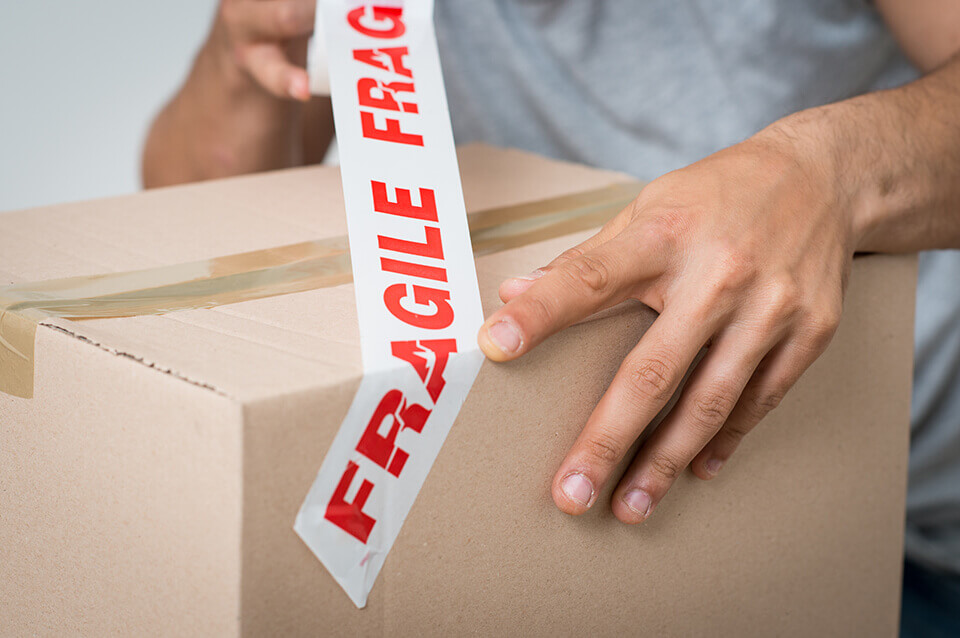 All stickers should be clearly visible
All stickers should be clearly visible
Green, Red, Yellow – Using Colors and Other Methods to Pack and Label
There are several different fool-proof methods to properly mark your belongings. Which one you choose depends solely on your preferences and resources.
A Quick Guide to Color Coding
Color coding is likely one of the most common methods. It is also a great solution if you’re relocating with kids since coloring stickers or cardboard will keep them occupied and out of the way on the relocation day. Choose a color for each room in your new home. Then, as you pack, simply place a sticker of the same color on each container that goes in that particular room.
Detailed Description of the Content
If you’d rather not waste time on coloring, there is a much simpler and straightforward way to organize your items. Simply write down a list of all the items that are inside. However, if you want to pack valuables inside a container, we highly suggest that you don’t write that down. You never know what might happen or if something might get stolen just because the container had a “flat-screen TV” written on it.
Referring to the Inventory List
If you’re one of those people who like to pay attention to the smallest detail when getting organized to move cross-country, this is the method you should go for. However, it will likely take the most time, so it might not be the go-to method if you’re moving last-minute. The first step to using this method is to set aside a notebook for a household inventory list. Then, as you pack, label each box with a number. On your inventory list, divide all items into groups which will correspond to containers. Each group should have the same number as its box. This way, you and your professional long-distance movers will have access to the list of the content of each carton without taking the risk of writing it all down on the container for everyone to see.
Barcodes and Scanners
If you decide to get a packing service from your chosen interstate movers, they will likely use barcodes and scanners to mark each box. This means that you won’t have to waste precious time writing everything down, but you will also save the energy you would’ve otherwise spent packing.
 Color coding is a great way to keep your kids occupied
Color coding is a great way to keep your kids occupied
Where to Find Box Labels for Moving
A great thing about labels is that they’re not hard to come by. Here are some ideas on where to get them:
- Contact your chosen movers and ask if they are included in their packing supplies
- Find printable box stickers online and print them out at home on regular or sticky paper
- Home improvement stores might have at least some basic stickers
- You can also get plain blank stickers from an office supply store and customize them to your liking.
Using Post-It Notes
Truth be told, you don’t really need special stickers to do this properly. Check out the video below to learn how to use regular post-it notes to mark your items.
Now You’re Ready to Move
Now that you know why and how to use labels, it’s time to get down to work. If you’re running short on time, make sure to check out useful packing tips for moving in a hurry. We wish you a quick, easy, and stress-free moving experience.


